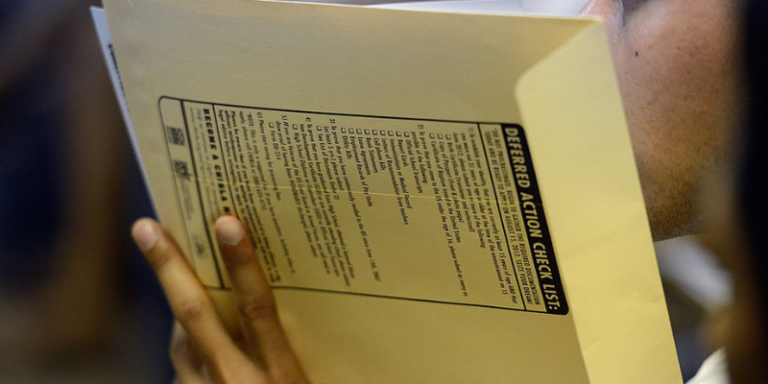Immigration Reform and DACA
Most Americans support DACA – and still it’s a politicized issue.
By: Jose Backer | July 2, 2020 | 413 Words

DACA documents (Photo by Kevork DjansezianGetty Images)
How Did It Begin?
DACA stands for Deferred Action on Childhood Arrivals, an executive policy ordering the United States Department of Homeland Security to halt deportations of immigrants brought to the United States as children. Under the system, people who have lived illegally in the country since childhood can apply for work permits. The applicants to the DACA program are often referred to as “Dreamers.”
Where Does The Debate Lie?
According to polls, Americans overwhelmingly support allowing DACA recipients to stay in the country. According to Pew Research, 74% of Americans supported granting total legal status to immigrants brought to the United States as children.
Attitudes to illegal immigration are often divided along party lines, with the Republicans against it and Democrats increasingly in favor of open borders. Even so, a majority of Republicans support the DACA program.
The Legality
From its beginning, DACA was never meant to be a permanent executive order. Former President Obama stated the following:
“This is not a path to citizenship. It’s not a permanent fix. This is a temporary stopgap measure…”
Obama insisted that upon passage of a bill called the DREAM Act, the executive order that started DACA would no longer be necessary. The DREAM Act (Development, Relief, and Education for Alien Minors Act) was introduced years before Obama’s presidency and was intended to grant residency to immigrants who entered the United States as children.
The DREAM Act was never passed, and Obama saw the DACA executive order as a means to accelerate the passage of the law. Critics saw this as a means to force legislation through a divided Congress. The arguments against DACA’s legality stem from this decision. It is Congress’s responsibility to pass laws about immigration, but in this case, the executive branch acted when it became clear that Congress was too gridlocked to pass reform.
Problems and Solutions
The debate has continued throughout the Trump presidency, with mixed signals being given over President Trump’s intentions for the policy. The administration made moves to rescind the DACA program, but that was blocked by the Supreme Court in June 2020, due to a technicality.
The only realistic solution to this standoff would be for Congress to step in and pass a bipartisan immigration reform bill that would no longer make the DACA program necessary. The DREAM Act is in limbo as Senate Republicans disapprove, but it will only prove more difficult for legislators to continue ignoring the issue.
















